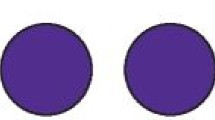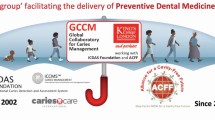Abstract
Aim
Cluster analysis was conducted on data from 5,169 United States (U.S.) Arizona children, age's 5‐59‐months with the goal of delineating patterns of caries in the primary dentition of pre‐school children without a priori pattern definitions.
Methodology
Cluster analyses were conducted using all data for children ages 0–4 years in aggregate: 1) for all subjects, and 2) for subjects without crowned restored teeth. Each of these two sets of analyses consisted of 8 differently specified cluster analyses as a validation procedure.
Results
The caries patterns identified from the clustering analysis are: 1) smooth surfaces (other than the maxillary incisor), 2) maxillary incisor, 3) occlusal surfaces of first molars, and 4) pit and fissure surfaces of second molars.
Conclusion
The cluster analysis findings were consistent with results produced by multidimensional scaling. These cross‐validated patterns may represent resulting disease conditions from different risks or the timing of various risk factor exposures. As such, the patterns may be useful case definitions for caries risk factor investigations in children under 60 months of age.
Similar content being viewed by others
Article PDF
Author information
Authors and Affiliations
Corresponding author
Rights and permissions
About this article
Cite this article
Psoter, W., Pendrys, D., Morse, D. et al. Caries Patterns in the Primary Dentition: Cluster Analysis of a Sample of 5,169 Arizona Children 5–59 Months of Age. Int J Oral Sci 1, 189–195 (2009). https://doi.org/10.4248/IJOS09077
Received:
Revised:
Accepted:
Published:
Issue date:
DOI: https://doi.org/10.4248/IJOS09077



